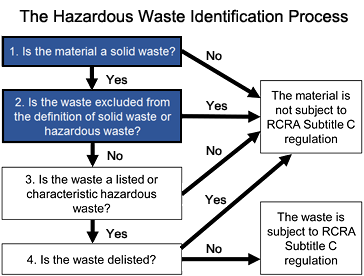The Buzz on Reclaim Waste
Table of ContentsThe Ultimate Guide To Reclaim WasteThe Basic Principles Of Reclaim Waste The Ultimate Guide To Reclaim WasteIndicators on Reclaim Waste You Should KnowThe Reclaim Waste Ideas
Explore the types, events, and types of fluid waste. Domestic sewage waste describes the waste and items from a residential sewage-disposal tank. This sort of waste is developed by humans in residences, schools, and various other buildings. This only consists of sewage-disposal tanks that have a drain area. The proper administration and disposal of residential sewer waste need fluid waste to be transferred to a sewer therapy plant where the correct methods and tools are related to purify and throw away waste.
Business waste commonly consists of prospective threats, such as combustible products or a combination of liquid and strong waste items, and requires an extra advanced and in-depth disposal process. The disposal of industrial waste normally entails the filtration of waste before transport to ensure secure and correct disposal. Industrial waste is produced from byproducts and overflow of industrial processes and production.
This type of waste can not use the exact same sewer monitoring transport or processes as septic or commercial liquids. The hazardous waste monitoring process needs the assessment and screening of liquid waste prior to it undertakes the disposal procedure (liquid waste removal). Drainage waste is the fluid waste that originates from runoff and excess stormwater in highly inhabited areas or cities
Overflow waste can trigger contamination and flooding if not dealt with appropriately. Making certain proper waste monitoring can avoid disasters and reduce ecological harm.
The smart Trick of Reclaim Waste That Nobody is Discussing
Contact PROS Providers today to learn more about our waste management and disposal solutions and the correct methods to look after the liquid waste you create.
(https://boom-fruit-496.notion.site/Industrial-Wastewater-Treatment-The-Key-to-a-Cleaner-Greener-Future-13c9fdbb2e9380eca32fee3a79088ddf?pvs=4)This supposed 'wastewater' is not only a vital source but, after treatment, will certainly be released to our land, rivers or the sea. Utilized water from toilets, showers, baths, kitchen sinks, washings and industrial processes is recognized as wastewater.

water used to cool down equipment or tidy plant and devices). Stormwater, a kind of wastewater, is drainage that moves from agricultural and metropolitan locations such as roofing systems, parks, yards, roads, courses and seamless gutters into stormwater drains, after rain. Stormwater streams neglected visit site straight to regional creeks or rivers, eventually reaching the sea.
The Best Guide To Reclaim Waste
In Queensland, many wastewater is dealt with at sewer treatment plants. Wastewater is transported from domestic or commercial websites via a system of sewers and pump stations, recognized as sewage reticulation, to a sewer treatment plant. Local governments build, keep and operate most sewage treatment plants. Operators are certified under the Environmental Management Act 1994 to discharge treated wastewater at an acceptable environmental requirement into rivers.
The Department of Natural Resources advises local governments regarding managing, operating and maintaining sewerage systems and therapy plants. In unsewered locations, city governments may require householders to mount individual or house sewer treatment systems to treat domestic wastewater from toilets, kitchens, shower rooms and laundries. The Department of Natural Resources authorizes the usage of house systems when they are confirmed to be efficient.
The majority of stormwater obtains no treatment. In some new subdivisions, treatment of some stormwater to get rid of trash, sand and crushed rock has begun making use of gross contaminant catches. Wastewater treatment takes place in 4 stages: Gets rid of solid issue. Larger solids, such as plastics and other things incorrectly discharged to sewers, are gotten rid of when wastewater is gone through screens.
Makes use of little living organisms recognizes as micro-organisms to break down and eliminate continuing to be dissolved wastes and fine fragments. Micro-organisms and wastes are incorporated in the sludge.
An Unbiased View of Reclaim Waste
Nutrient removal is not available at all sewer treatment plants because it requires expensive specialized tools. Clear liquid effluent produced after therapy may still include disease-causing micro-organisms - liquid waste disposal melbourne.

Most wastewater moves into the sewage system. Under the Act, neighborhood governments carry out authorizations and licences for ecologically relevant tasks (ERAs) involving wastewater launches that might have a local influence.
The 9-Minute Rule for Reclaim Waste
Monitoring provides valid information regarding water quality and can verify that permit problems are being fulfilled. The information obtained with monitoring gives the basis for making water top quality choices.